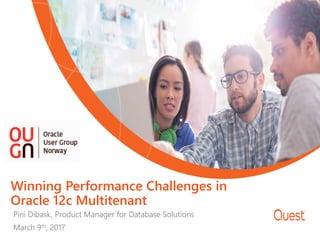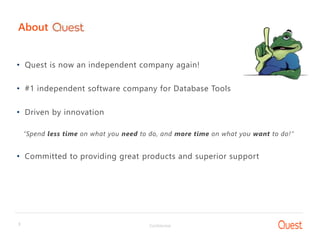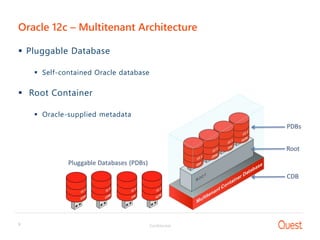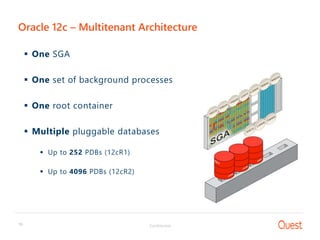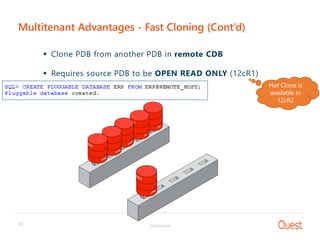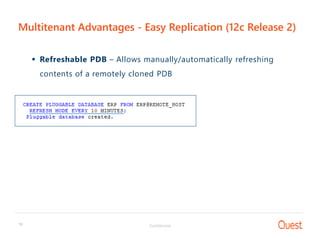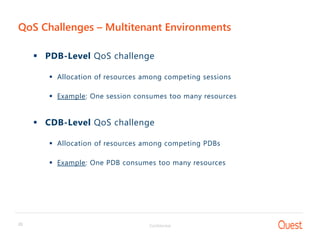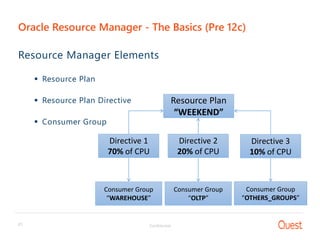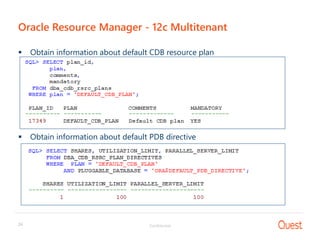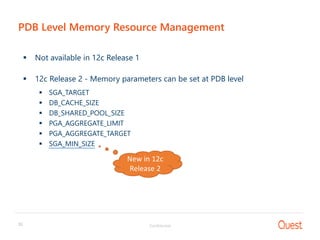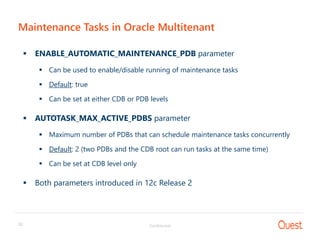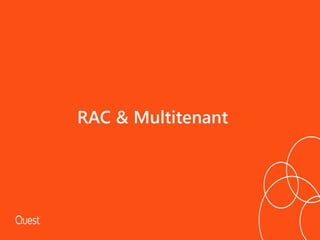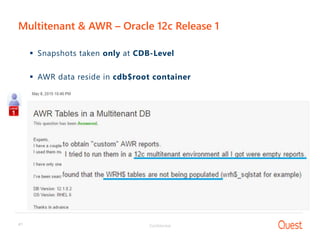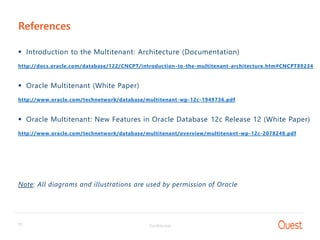This document provides an overview and introduction to Oracle 12c Multitenant architecture. It discusses key features such as pluggable databases (PDBs), container databases (CDBs), and the benefits of consolidation. The document also covers best practices for ensuring quality of service (QoS) between PDBs using resource management. It describes using the Oracle resource manager to allocate resources at the CDB and PDB level. Lastly, it summarizes performance monitoring in multitenant environments with Automatic Workload Repository (AWR) functionality in 12c Release 1 and 2.
